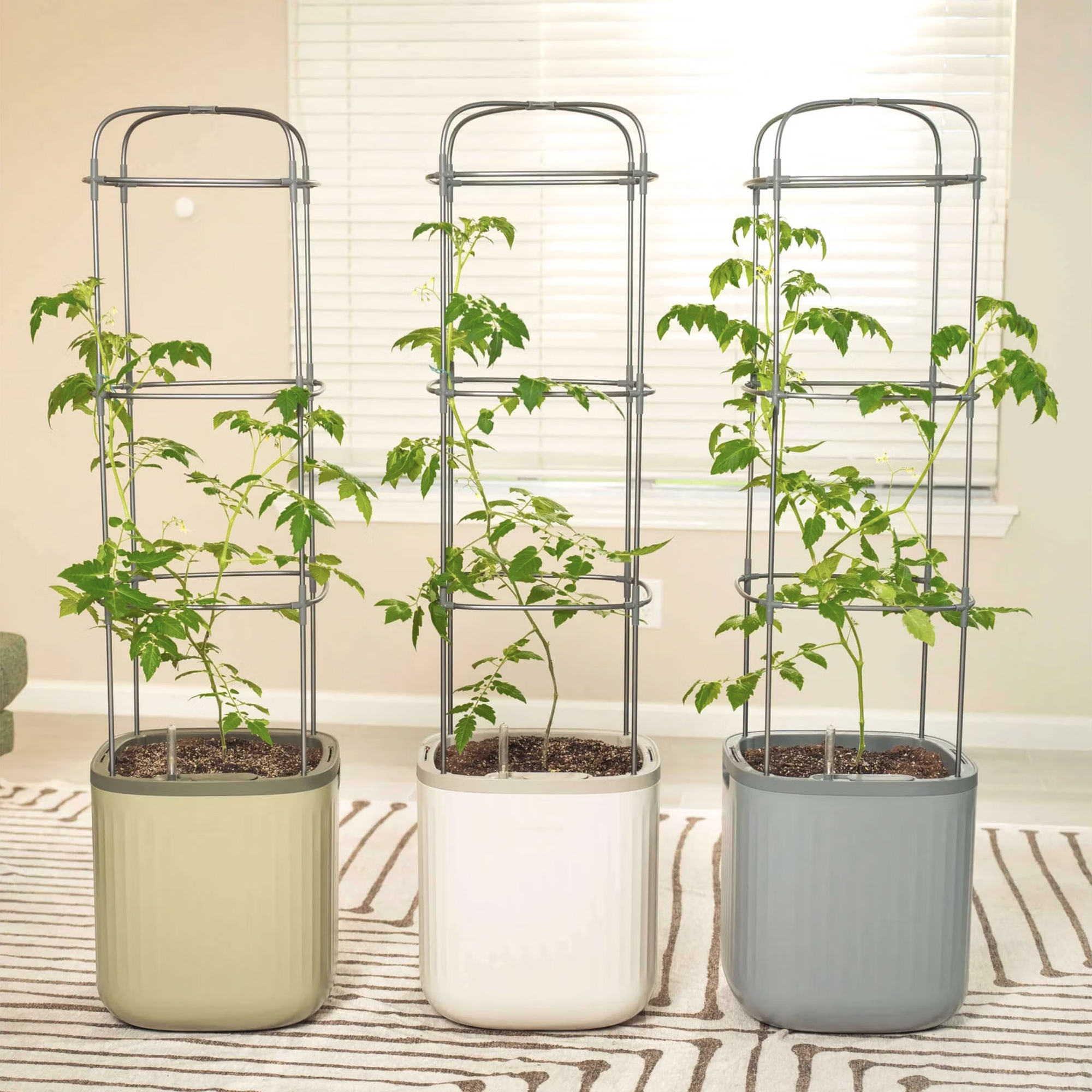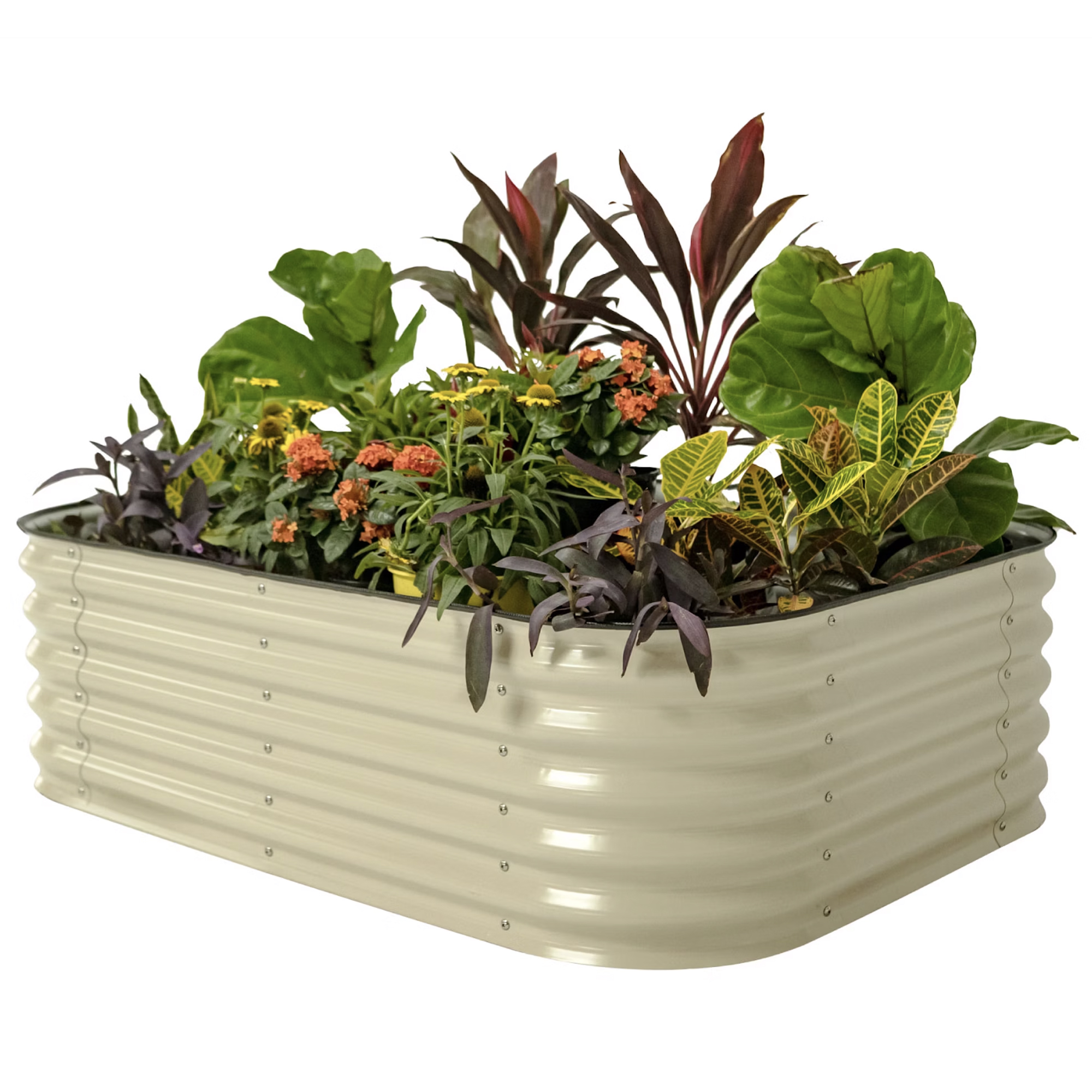14 Vegetable Trellis Ideas To Maximize Your Garden Harvest
Support your homegrown crops – and embrace vertical gardening – with these flexible and attractive vegetable trellis ideas to suit all budgets and styles.
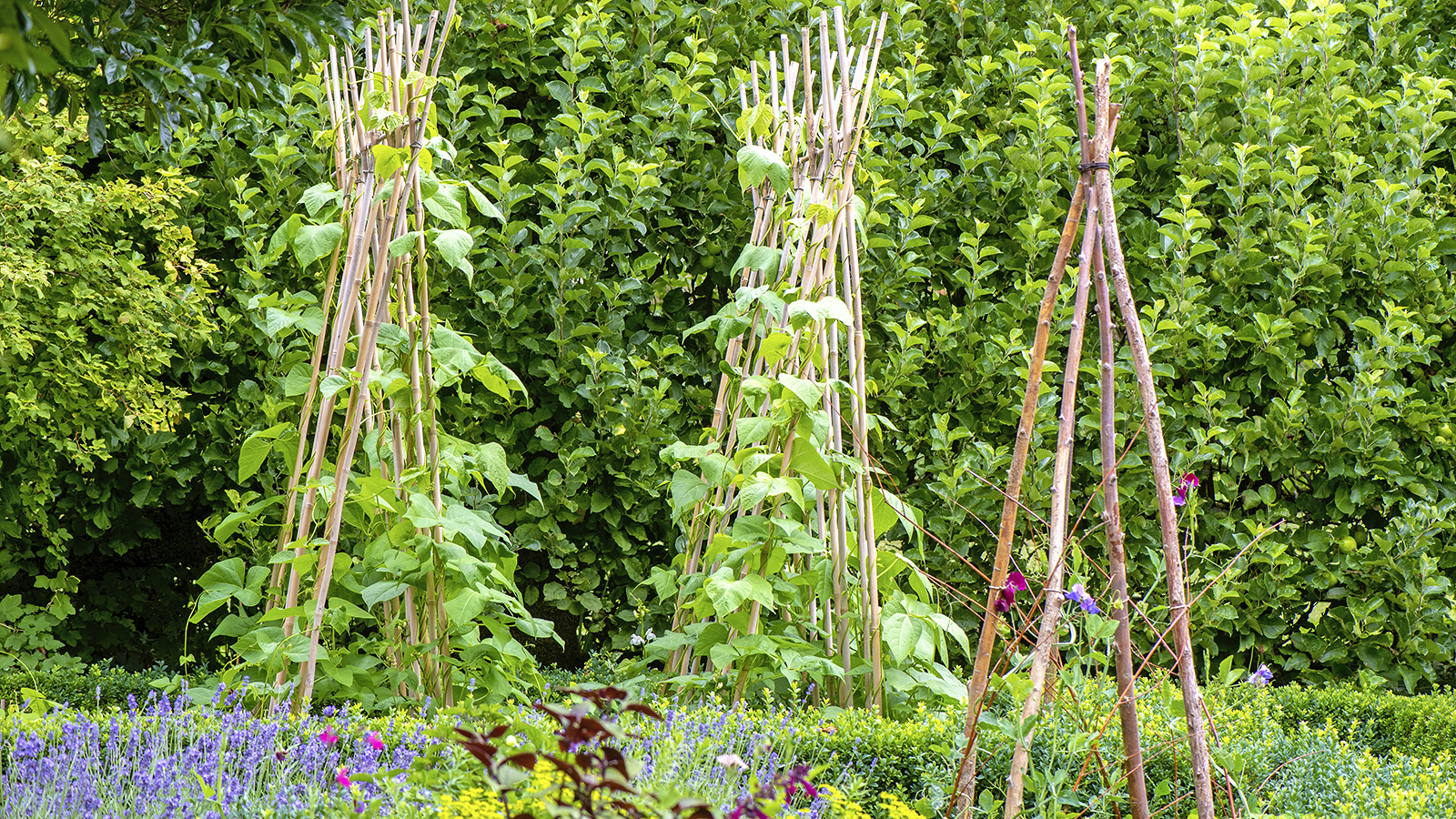

Growing a vertical vegetable garden is a wonderful space-saving solution that will enable you to get the best out of vining crops such as tomatoes, beans, peas, squashes, and cucumbers, as well as some fruit trees.
Many different trellis types are available to support plants, but the best vegetable trellis ideas also form an attractive feature, making the garden feel more three-dimensional.
Training crops to grow upwards is beneficial to the health of the plant, minimizing access from pests, increasing airflow, and enabling access for tending and harvesting. It can also make a crop more productive, encouraging the formation of more fruits.
Vegetable trellis can be as sophisticated or as simple as you like, with upmarket products doubling as elegant walkways like these options from Amazon, and the most basic solutions employing sticks and string, costing almost nothing. If you're just starting a vegetable garden, then keep it simple.
Discover the most practical and stylish vegetable trellis ideas for every size and style of garden, and maximize the potential of your growing space.
1. Build An A-Frame Trellis With Canes
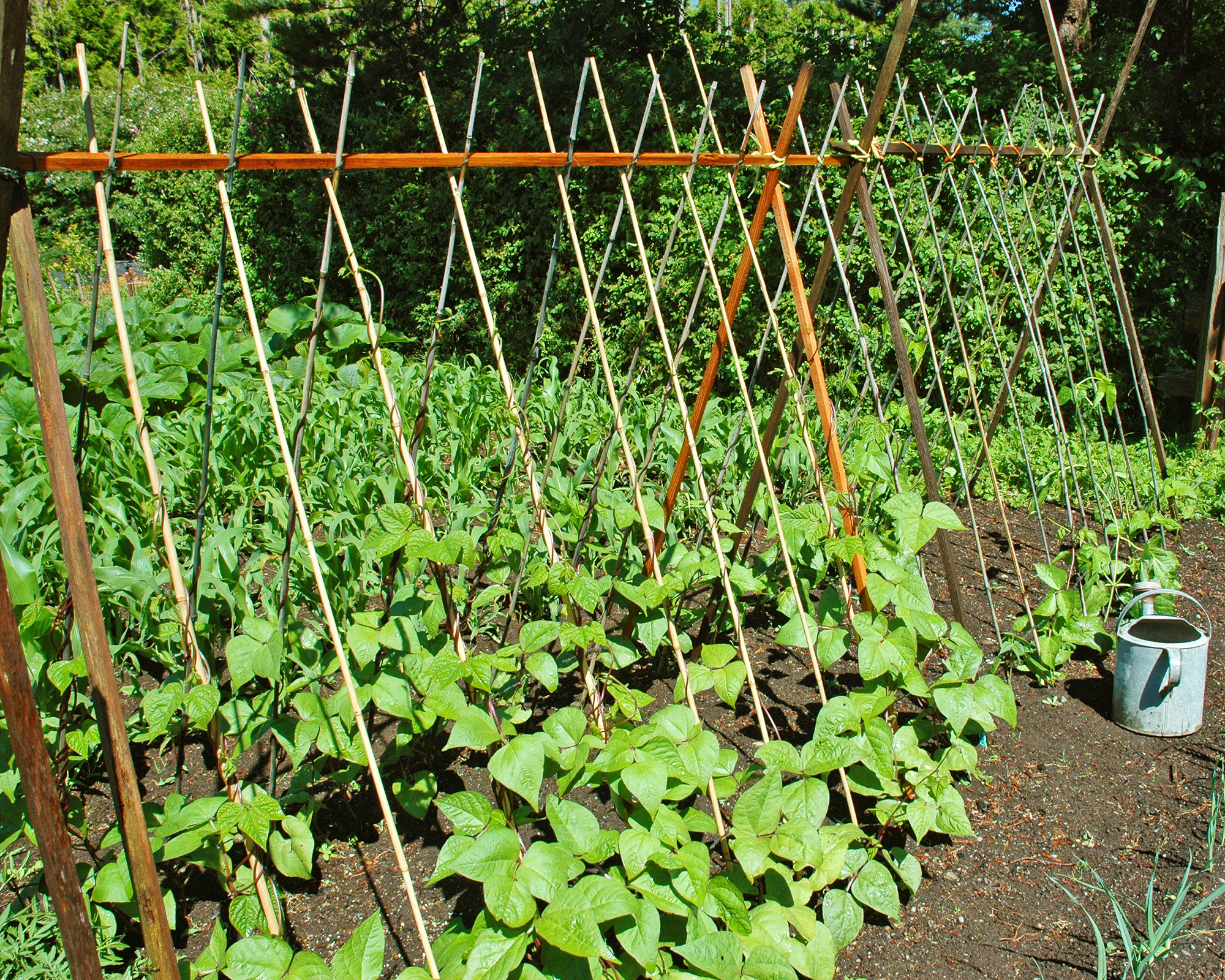
A simple A-frame trellis is an efficient solution for growing a range of climbing vegetables, but works particularly well for supporting pole beans. You can purchase metal trellises of almost any size at Amazon, or make your own.
When made with canes or sticks, it's also a flexible option that can be made as long as necessary to fit a row of crops.
Sign up for the Gardening Know How newsletter today and receive a free copy of our e-book "How to Grow Delicious Tomatoes".
To recreate this idea, you will need thicker sticks or timbers for the end posts, and bamboo canes or slimmer sticks for the individual supports.
At either end of the row, insert supporting posts fairly deeply in the ground, and cross over at the top, securing with string. Attach a horizontal timber running between the two end supports.
Then, insert canes at intervals to match the required plant spacing. Cross these underneath the horizontal support, and affix them with string.
2. Make A Teepee Trellis
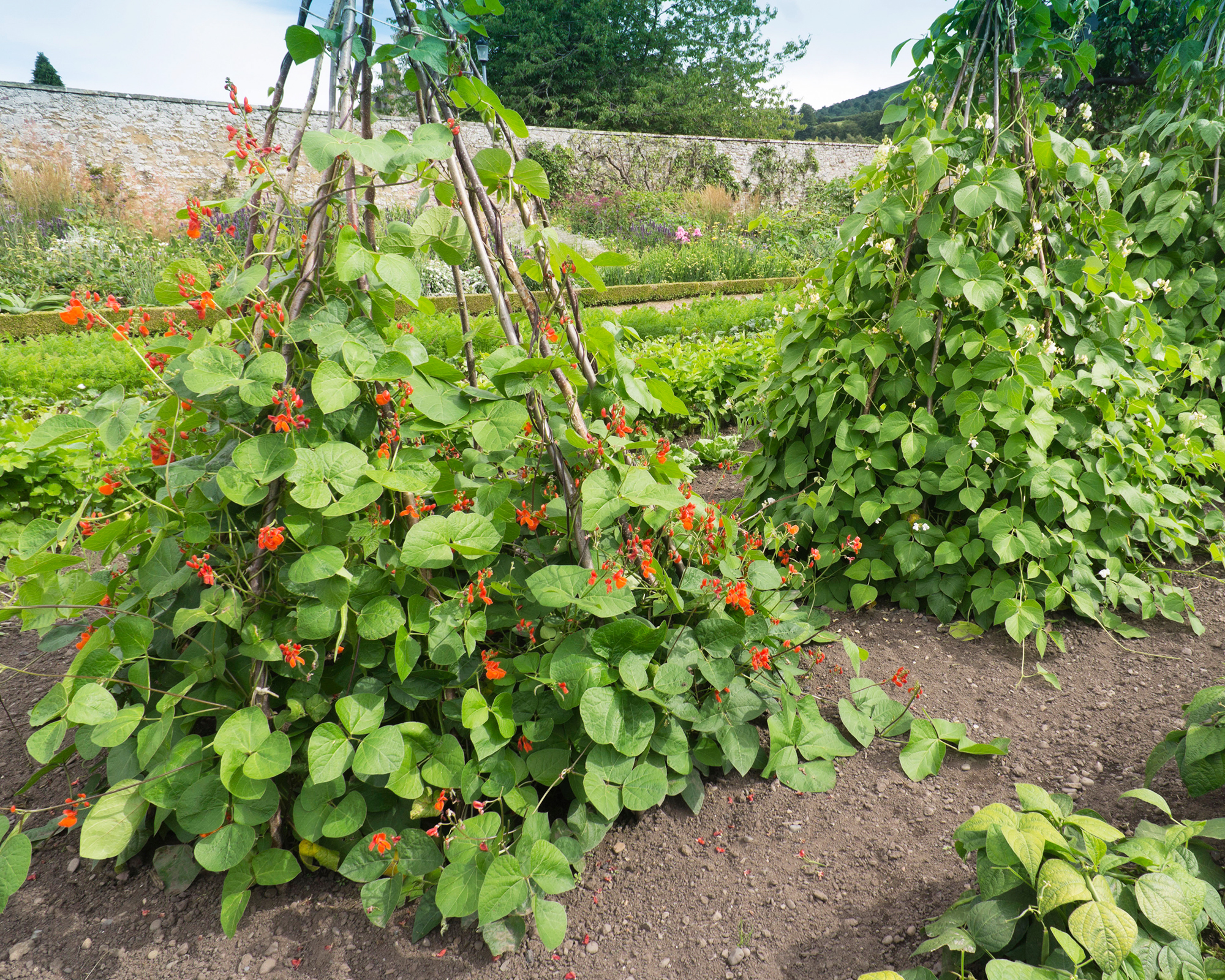
A teepee trellis is one of the simplest vegetable trellis ideas. While it can be bought on Amazon, it's incredibly easy to make and can be used to support almost any vining crop.
They are commonly used for peas and beans, with the plants positioned around the edges, and their tendrils growing around each cane. However, narrower designs can easily be fashioned into tomato supports, while wider designs with string tied at intervals are great for squashes and cucumbers.
Simply push sticks or canes into the ground around the plant in a circular formation. Gather them together at the top and tie them with string.
3. Add Trellis To Raised Beds
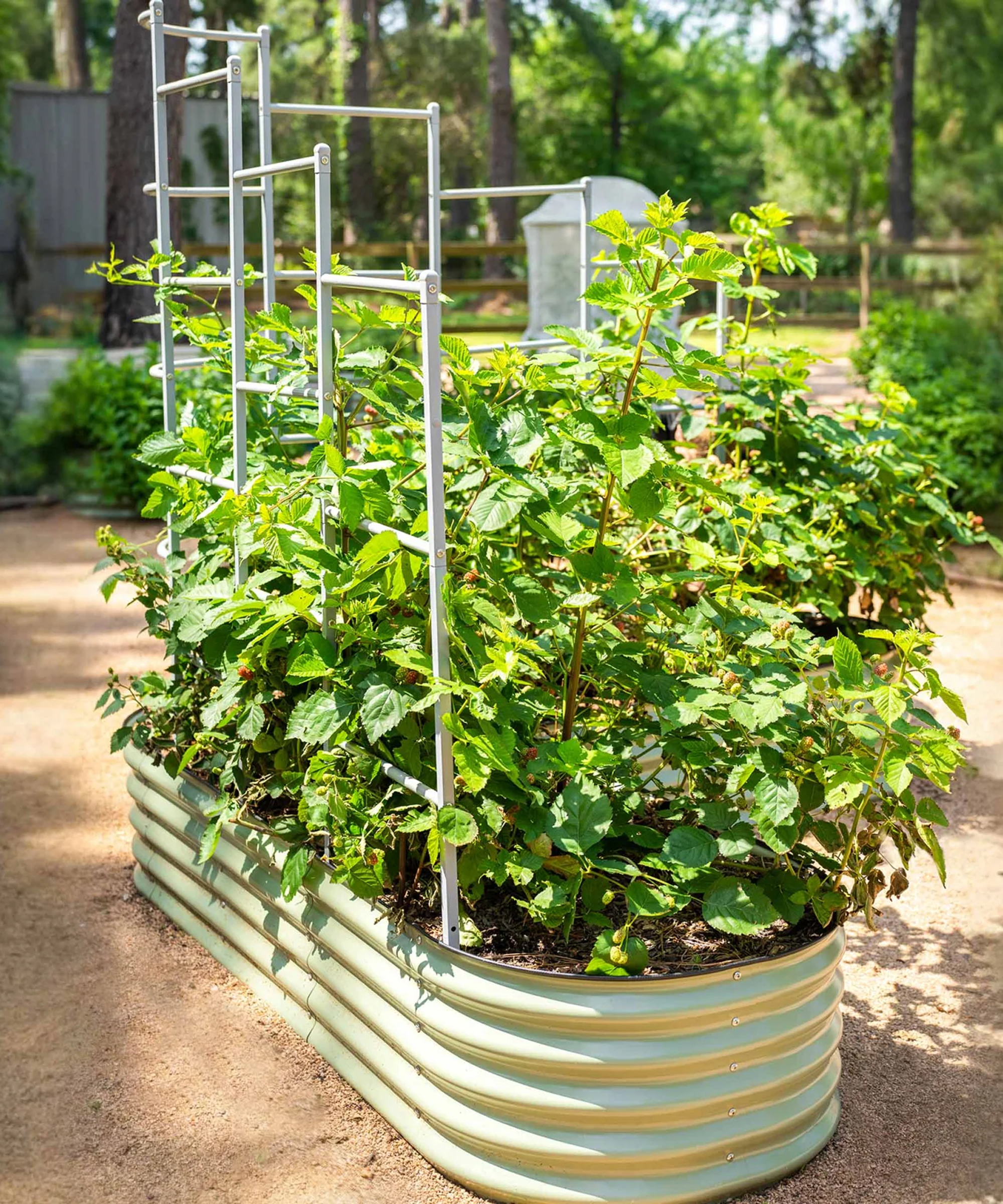
Growing vegetables in raised beds has become extremely popular and has many benefits. The practice enables gardeners to customize the soil mix, to grow on hardscaped areas such as patios, and it can even allow planting to start earlier in the year, as the soil tends to warm up quicker.
You can make your raised garden bed ideas even more versatile by adding trellis. This allows greater flexibility when positioning the beds, as they don't need to be next to a wall.
Either build your own custom solution or invest in a ready-made design that fits the dimensions of your bed.
4. Support Vines With String
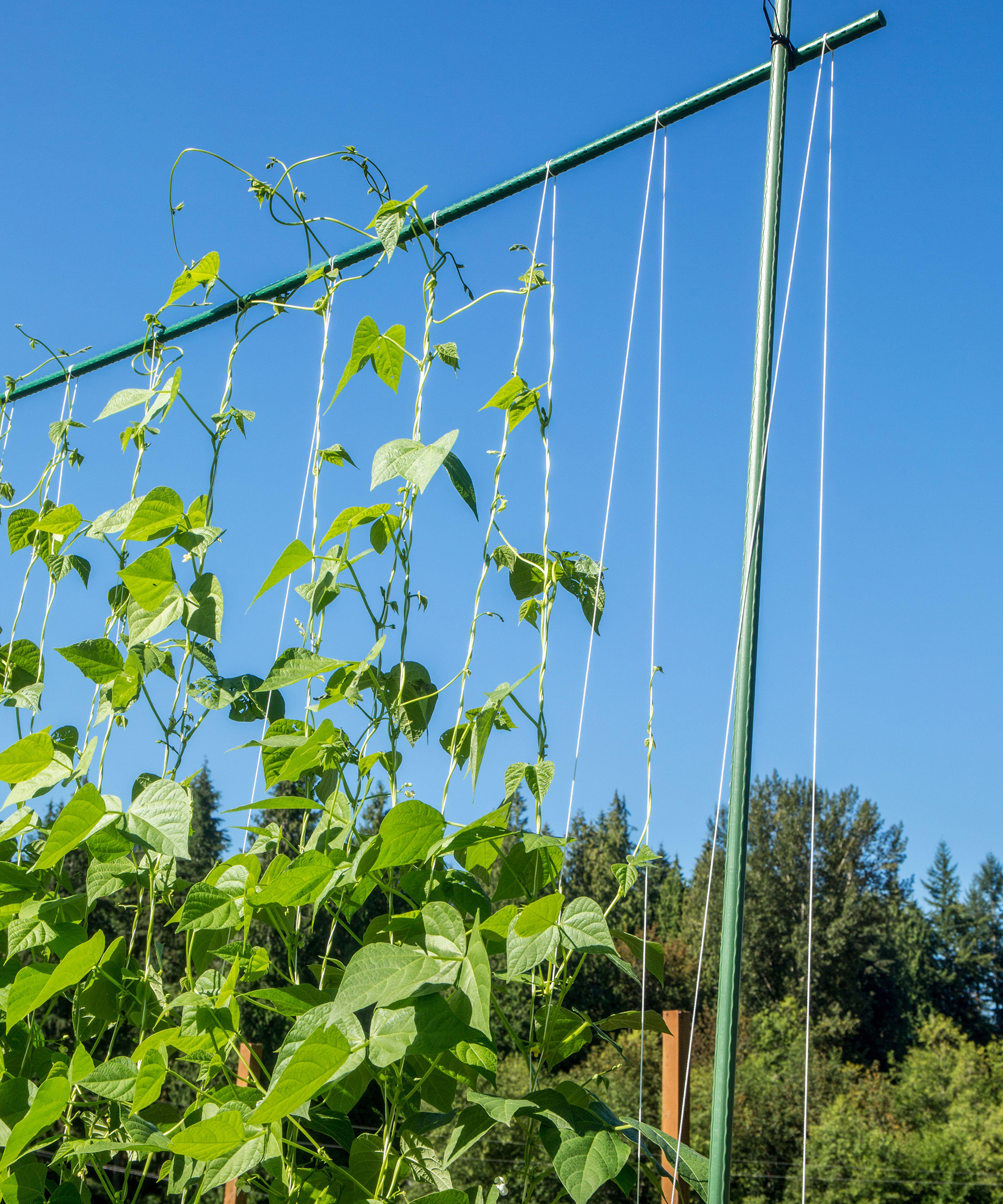
A string trellis is a cost-effective, space-saving solution for growing most vining crops, but is widely used for stringing up tomatoes, beans, and peas.
You will need a support structure of either metal or wood. Either build one using rods or timbers, or utilize an existing structure in the garden.
Simply tie a length of string to the top of the structure – ideally looping a long length over and around – and then affix it to the ground using garden staples. You can also use this trellis netting from Amazon, which is affordable and made specifically for vining crops.
5. Make A Tomato Trellis Using The Florida Weave Method
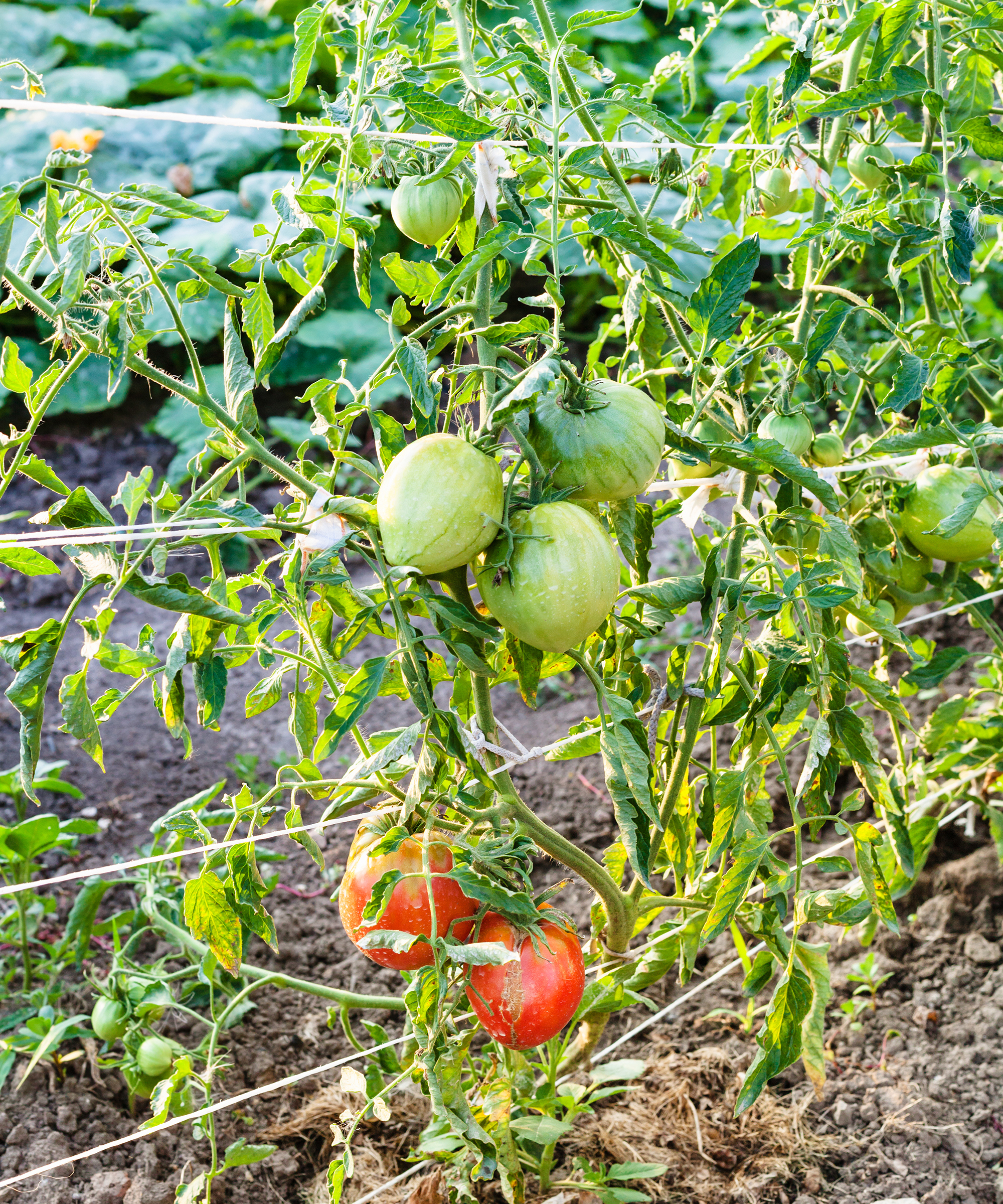
Experiment with growing tomatoes using the Florida weave method. This simple trellis support uses horizontal twine tied to rough wooden stakes – as smooth canes will cause the twine to slip down.
As the tomato plants grow, they are woven through the support, like a basket weave. This creates a gentle curvature to the vine, enabling the plant to grow more fruit.
Many growers claim that the fruit is also larger with fewer blemishes, while being easy to access for spraying, checking, and harvesting.
6. Build A Tomato Cage
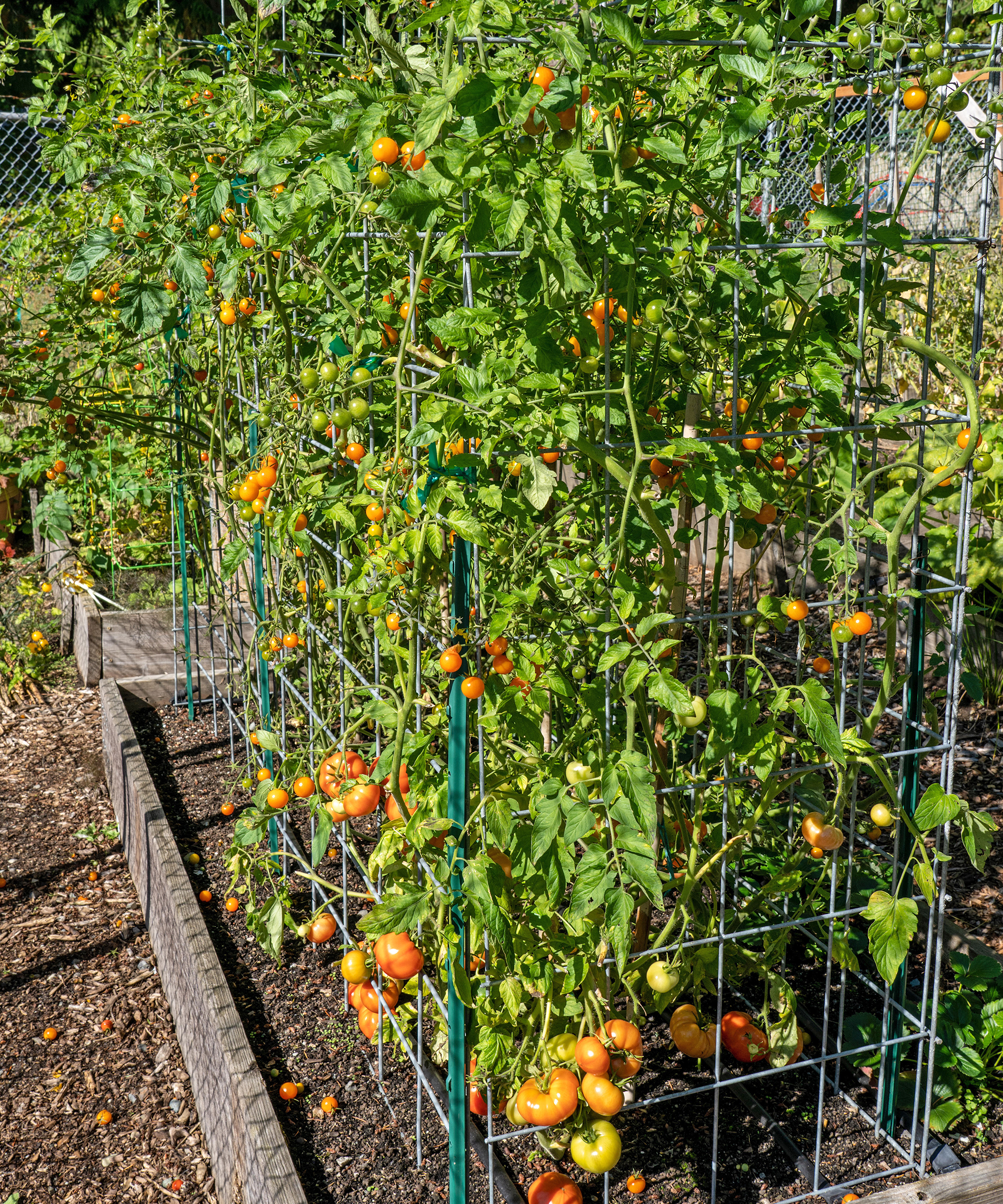
A tomato cage creates a strong support structure for tomatoes and heavy-fruiting plants, and can be built and taken down as needed. This is a cost-friendly option from Amazon, if you prefer not to DIY.
A roll of heavy-gauge, wire-mesh fencing is usually used, with 6-inch (15cm) square openings to enable easy access to the vines and fruit. This is fixed to tall rods or canes. Some gardeners use chicken wire, but this tends to have smaller holes.
You can choose to build a smaller cage for one plant, or a larger cage for housing several. Plants won't generally require tying to the support, and fruiting vines can be rested in individual holes.
7. Make A Simple Trellis With Sticks
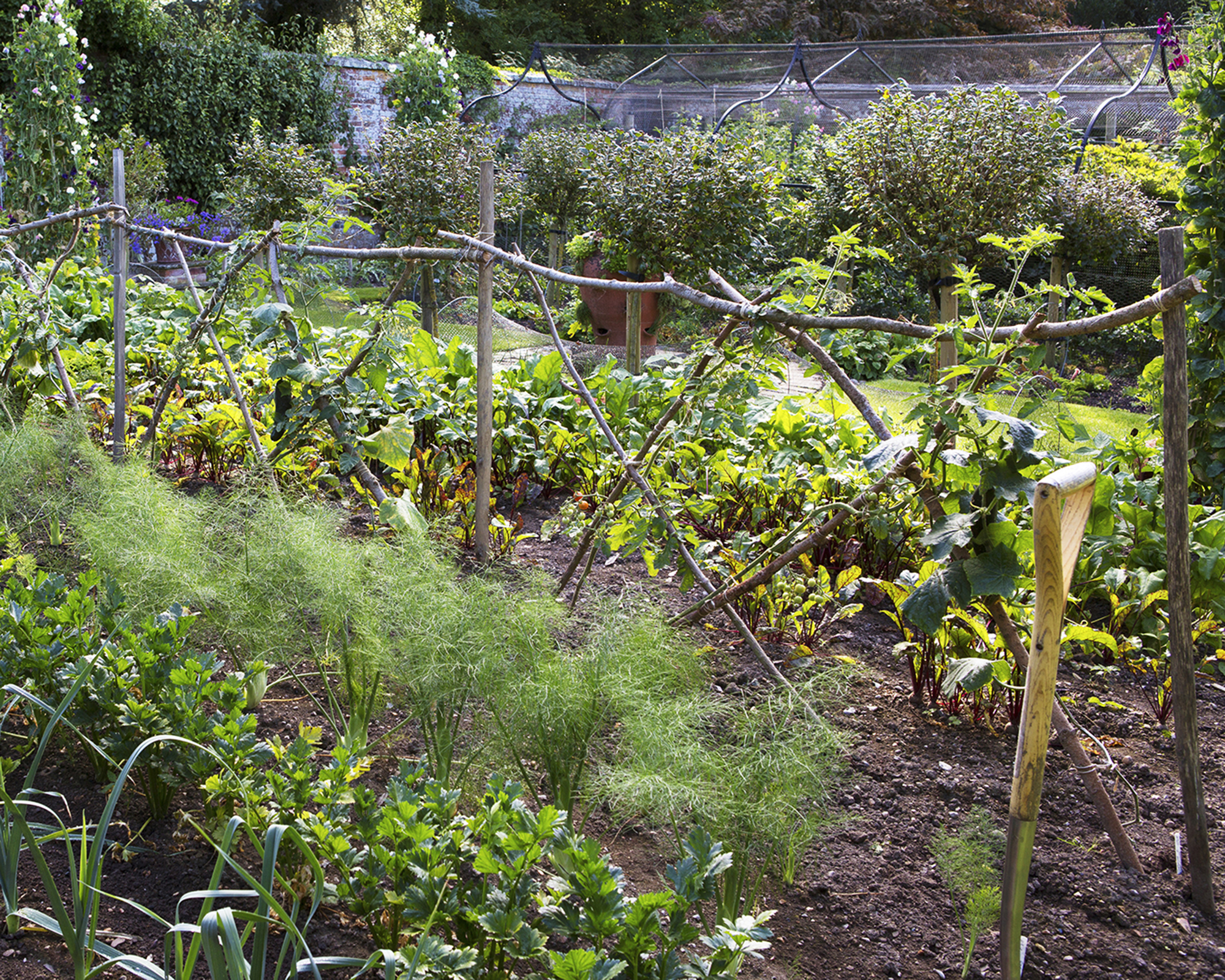
This idea is perfect for a rustic country garden, and makes use of old sticks and branches – though you could alternatively use willow or bamboo canes. It's best used to support lower-growing crops.
To recreate this criss-cross design, hammer in supporting posts or branches at roughly six-foot intervals, depending on the length of your horizontal branches, which need to be attached running across the top. Affix the sticks to the posts using twine, arranging them in an X-shape, with the bases of the sticks inserted into the ground.
8. Buy Pots And Planters With Trellis
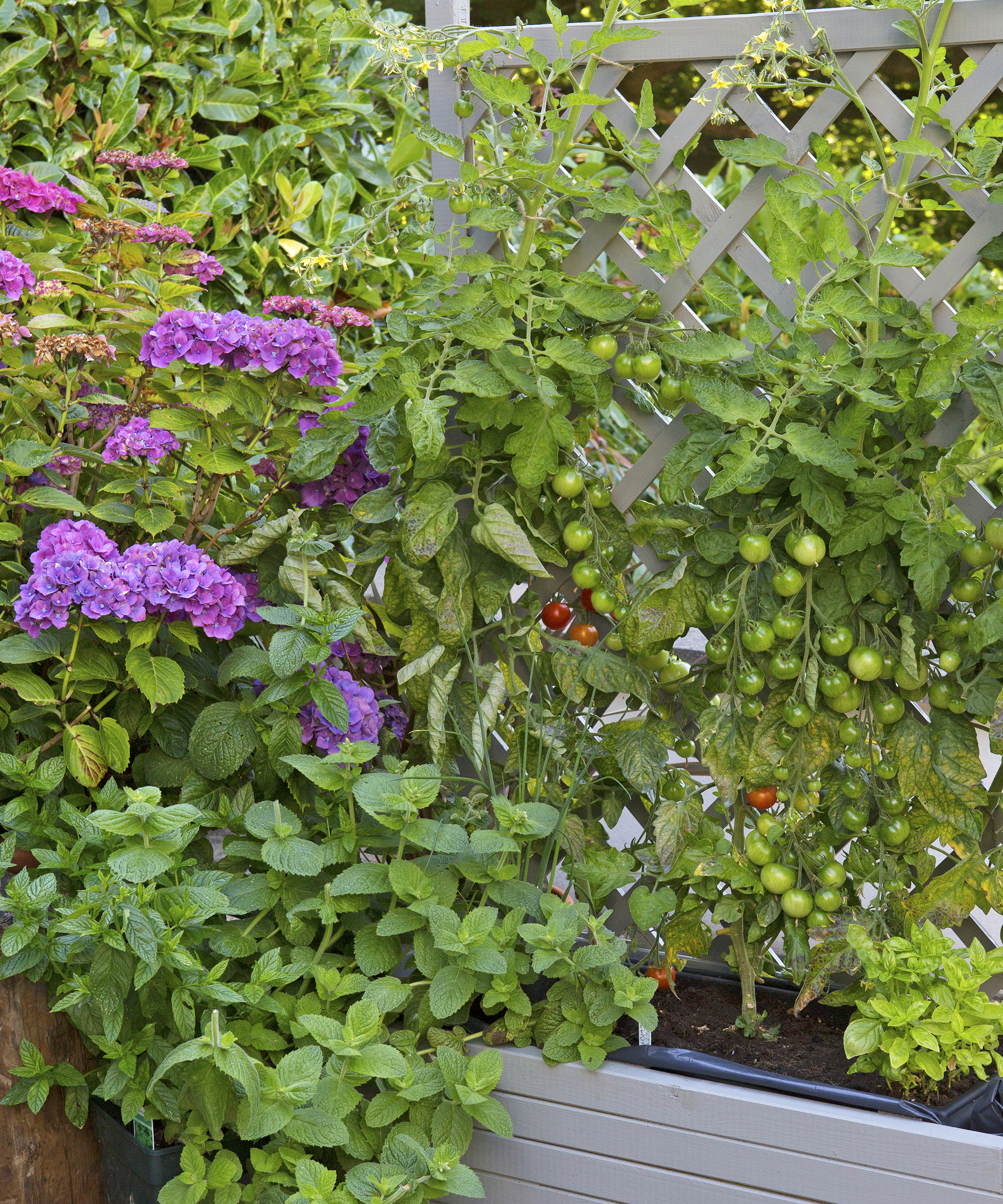
A planter or pot fitted with a built-in trellis is a wonderful solution for small spaces, such as balconies or patios. They may even be used for growing crops indoors.
Planters may be made from metal, wood, or plastic, and can be bought ready-made or custom-built. Depending on the size of the planter, you can just grow one focal-point plant – such as a tomato – or a variety.
Consider mixing in with some companion flowers, such as marigolds or nasturtiums, to keep pests at bay.
9. Use Discreet Wires To Espalier A Fruit Tree
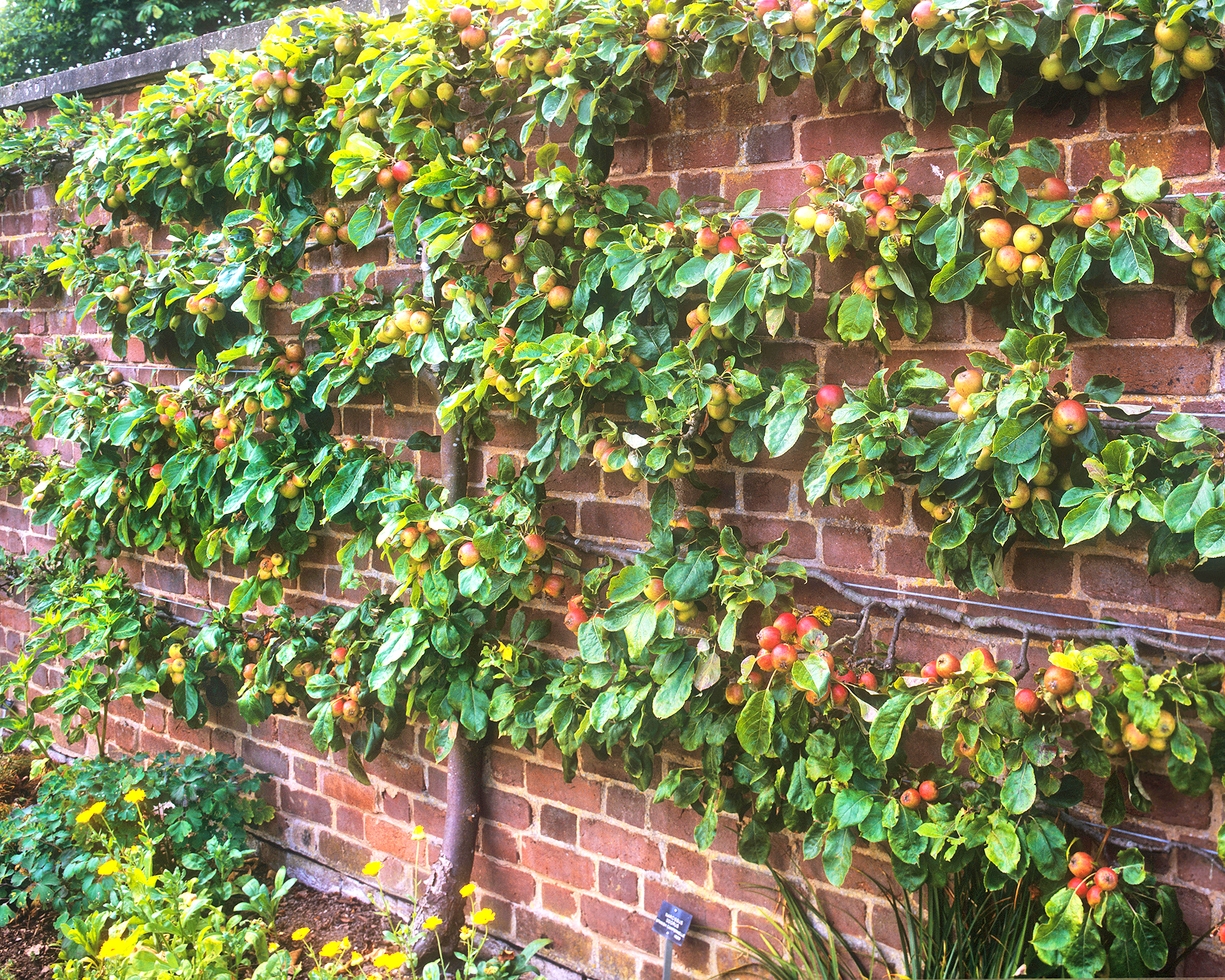
Espaliered fruit trees make a stunning feature in the garden. The practice involves training the branches to grow flat against a trellis or wall.
Apple and pear trees are the most obvious candidates for espaliering, but plum and even fig trees are also suitable. This apple tree uses steel wire to form an almost invisible support trellis.
Trees must be trained while young, so the branches are still flexible, and regularly pruned to retain their elegant shape.
10. Support Plants Against Netting
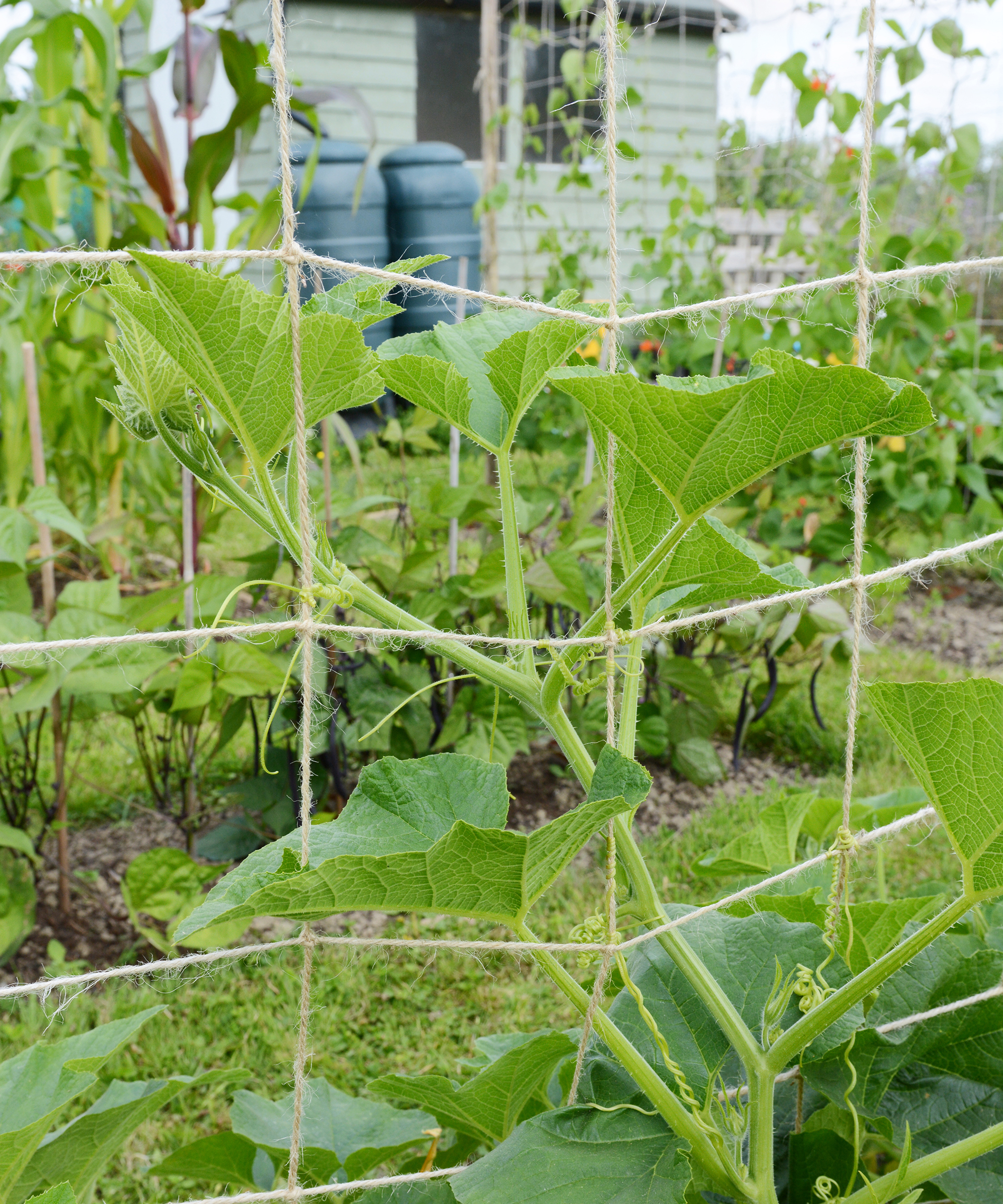
Netting or mesh, like this option from Amazon, is one of the easiest, most cost-effective vegetable trellis ideas. Plants can simply rest on the net as they grow, and you can weave stems and vines through the gaps.
It's also a custom solution, as it can easily be cut to any size to support pretty much any type of crop.
You will need a support structure to attach the netting to, such as canes, rods, sticks, or a purpose-built frame. Alternatively, netting can be stapled to a wooden support or fence.
11. Grow Overhead On An Arched Trellis
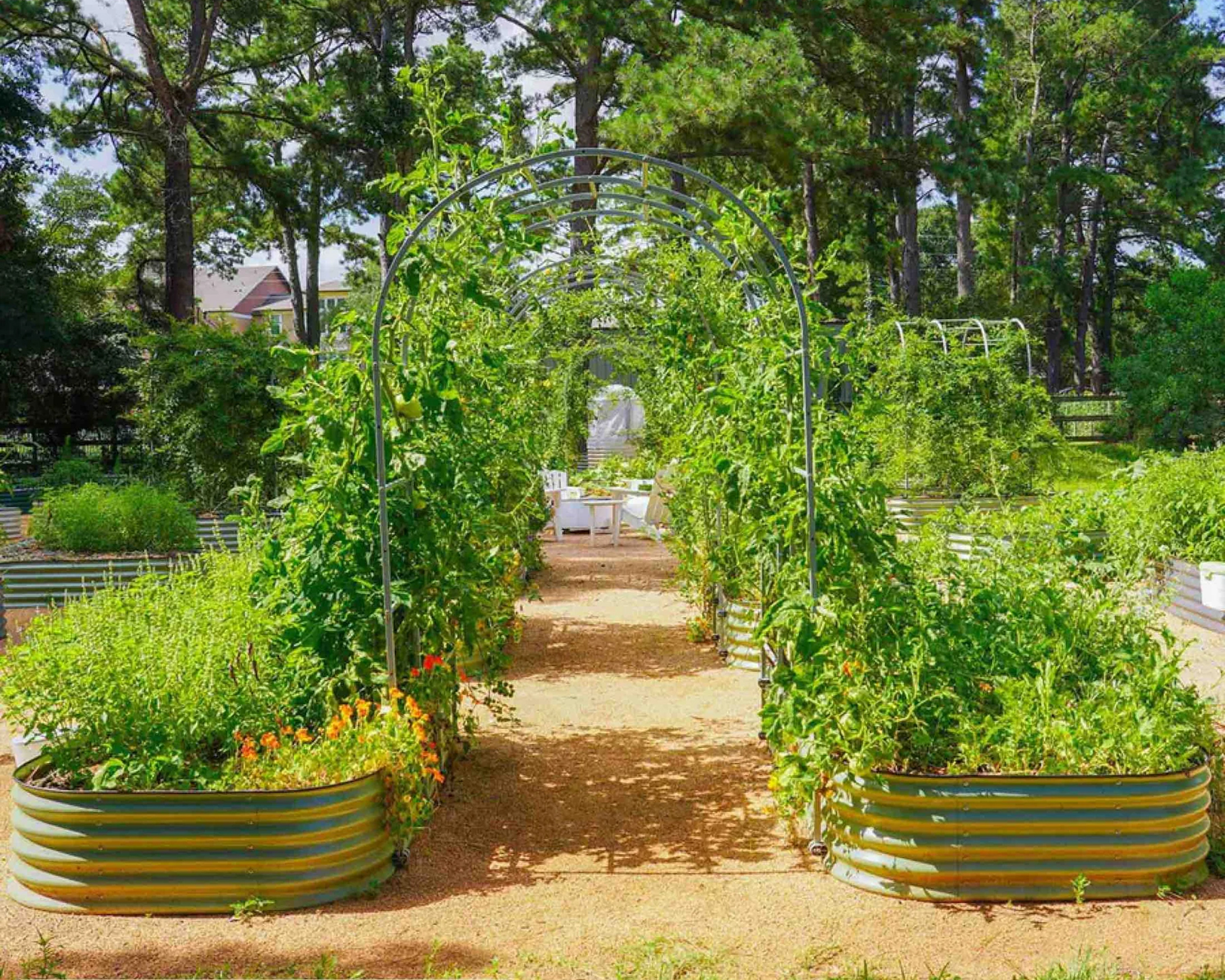
An arched trellis is an elegant solution that can create an inviting walkway in the garden. It looks particularly effective when plants are allowed to grow overhead, and their fruits hang down between the gaps in the frame.
It's a suitable option for fruiting vines, such as pears, apples, and grapes – which evokes a Mediterranean feel – but makes a quirky feature with vegetables such as runner beans, and cucumbers, or as a squash arch.
Trellised arches, like a DIY cattle panel trellis or these options from Amazon, are heavy-duty solutions that stay in place year-round. They can be installed into the ground, but also work beautifully teamed with large raised beds.
12. Hang Salad Baskets On A Trellis Wall
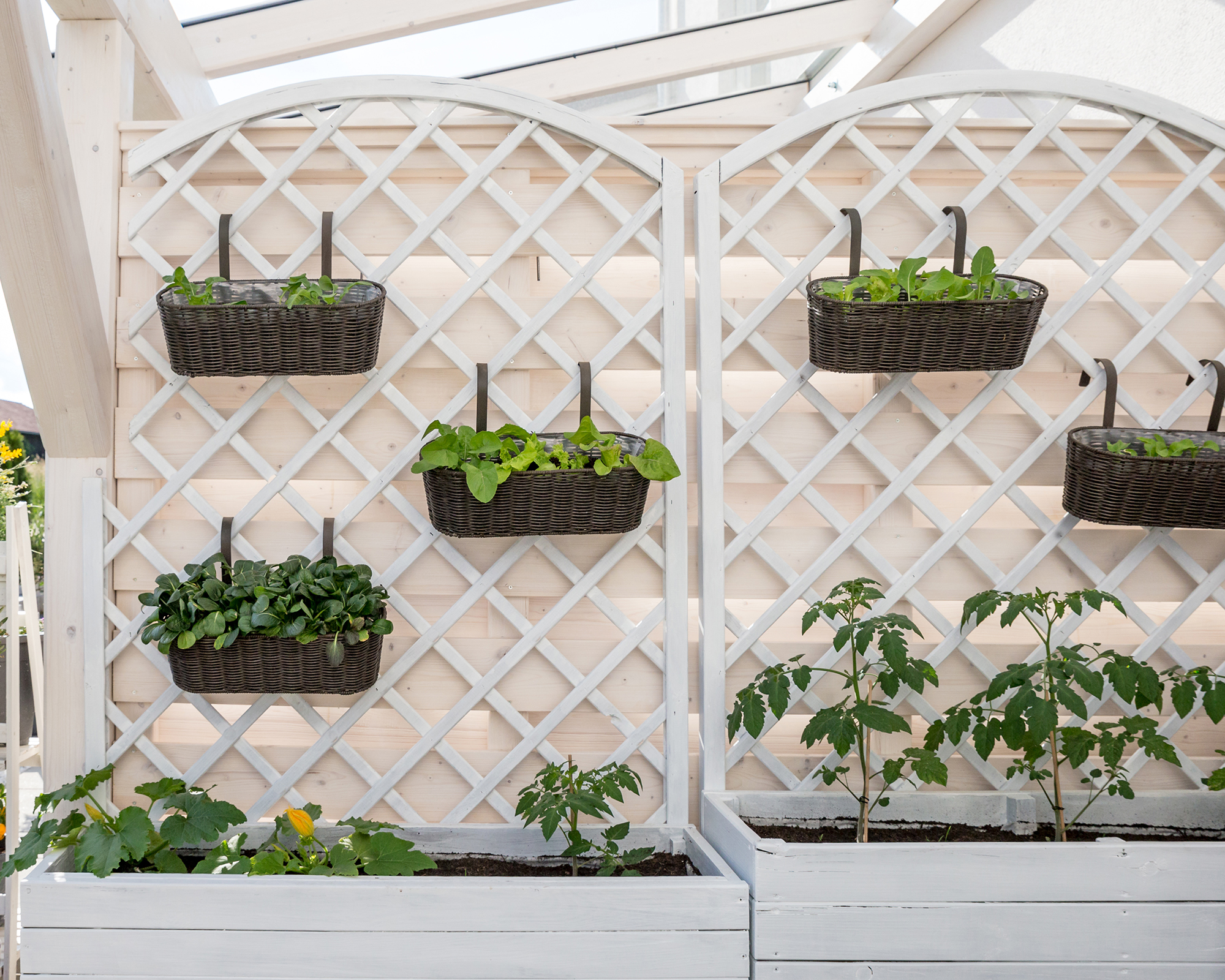
Create a multitasking trellis wall that accommodates hanging salad or herb baskets. When looped over the panels, these are a flexible solution that allows you to use the wall space before the crops planted below grow taller. Alternatively, you can train vines to grow around them.
Growing wall-hung crops allows you to harvest without bending down, and means your precious leaves will be less susceptible to damage from slugs and snails.
Good options to grow in mini planters include lettuce, radishes, basil, parsley, mint, and thyme. Many herbs double up as valuable companion plants, deterring pests such as aphids.
13. Build A Pergola For Edibles
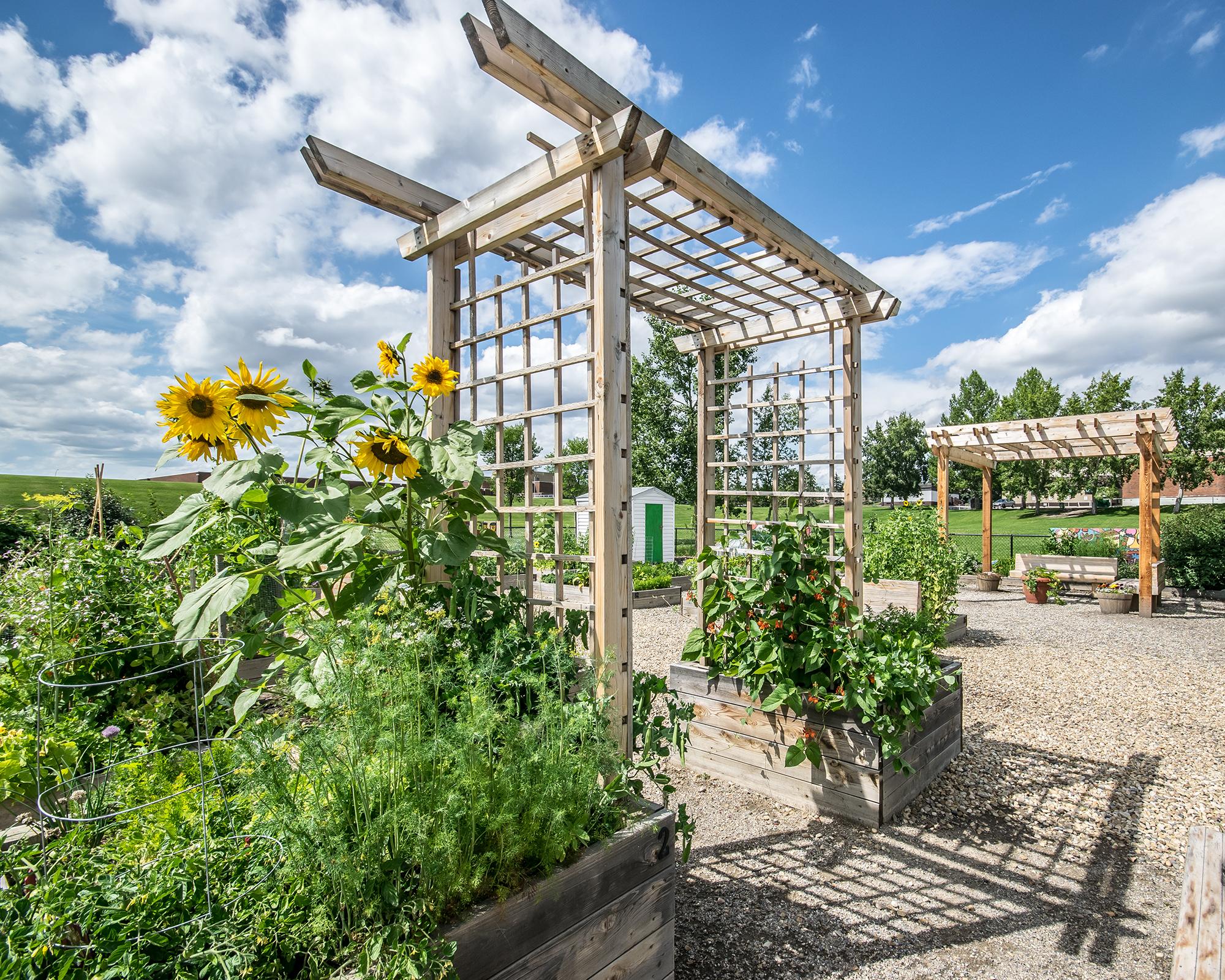
A pergola structure is perfect for growing vining vegetables – which can be mixed with ornamental vines for a more striking feature.
Pergolas are most often used to zone seating areas in the garden, but can also be used as a walkway between different areas.
Grapevines are a classic choice for pergolas, but colorful squashes and the scarlet flowers of pole beans make a charming addition.
14. Use An Angled Trellis For Squashes And Cucumbers
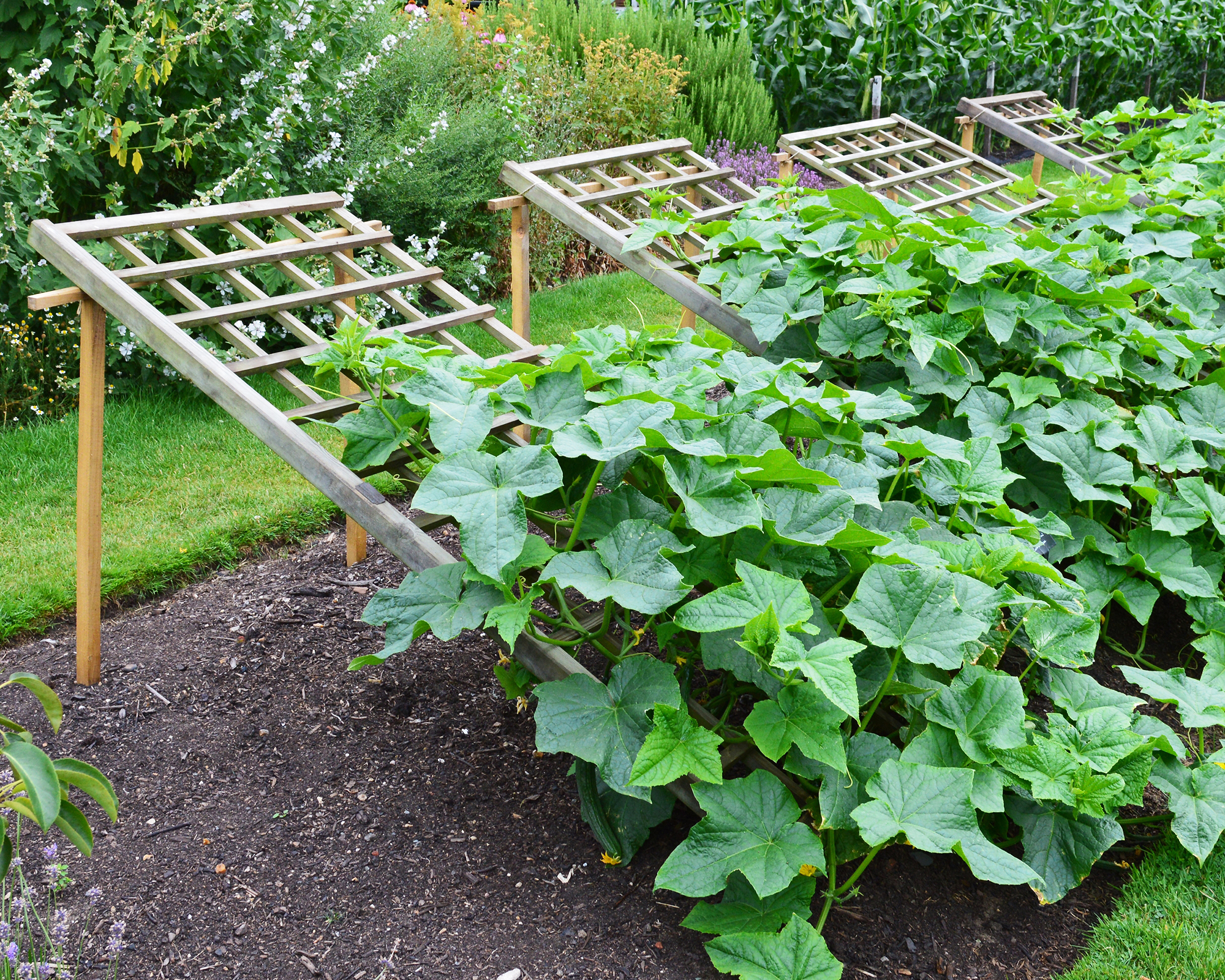
Positioning a trellis at a 45-degree angle is ideal for supporting heavier crops such as squashes and cucumbers, which can be more difficult to tie into taller structures.
A sloped trellis keeps the fruit off the ground and allows the vines to spread out. It also makes the crops easy to harvest and manage as they grow.
To recreate the idea, you will need to build a timber support and insert it securely into the ground. Against this, you can rest a wooden trellis panel, which should be tied to the support with string.
This article features products available from third-party vendors on the Gardening Know How Shop.

Melanie is an experienced gardener and has worked in homes and gardens media for over 20 years. She previously served as Editor on Period Living magazine, and worked for Homes & Gardens, Gardening Etc, Real Homes, and Homebuilding & Renovating. Melanie has spent the last few years transforming her own garden, which is constantly evolving as a work in progress. She is also a passionate organic home grower, having experimented with almost every type of vegetable at some point. In her home, Melanie tends to an extensive houseplant collection and is particularly fond of orchids.

